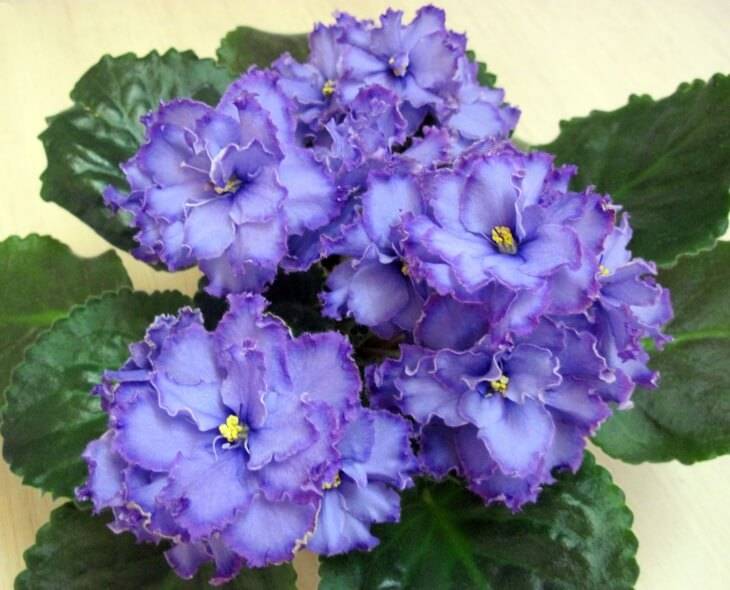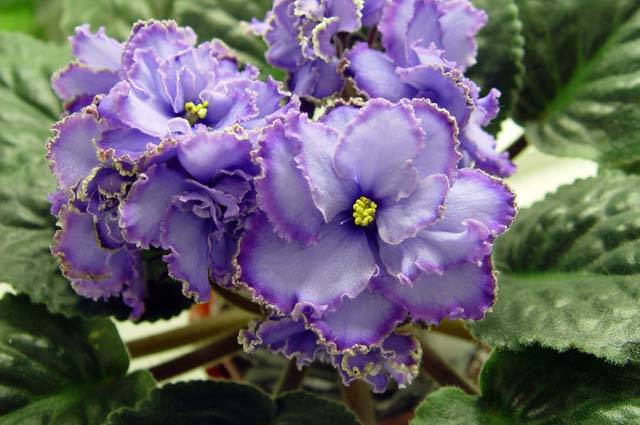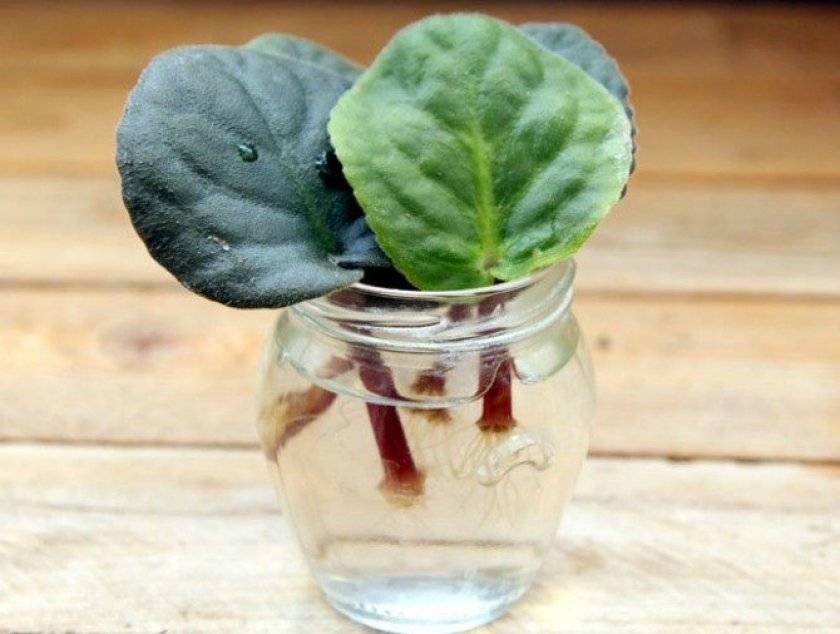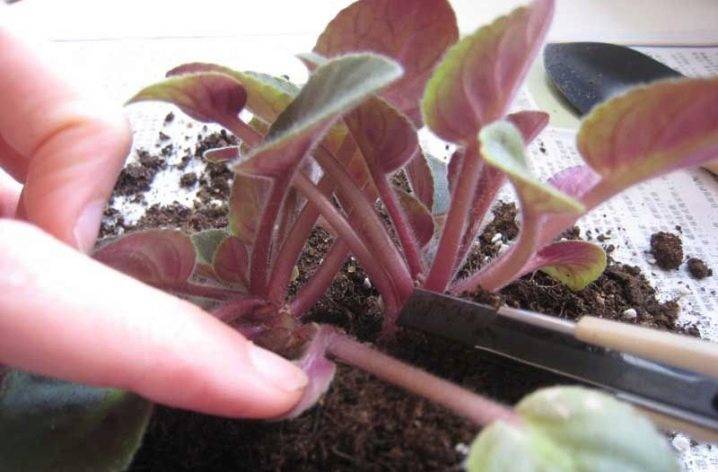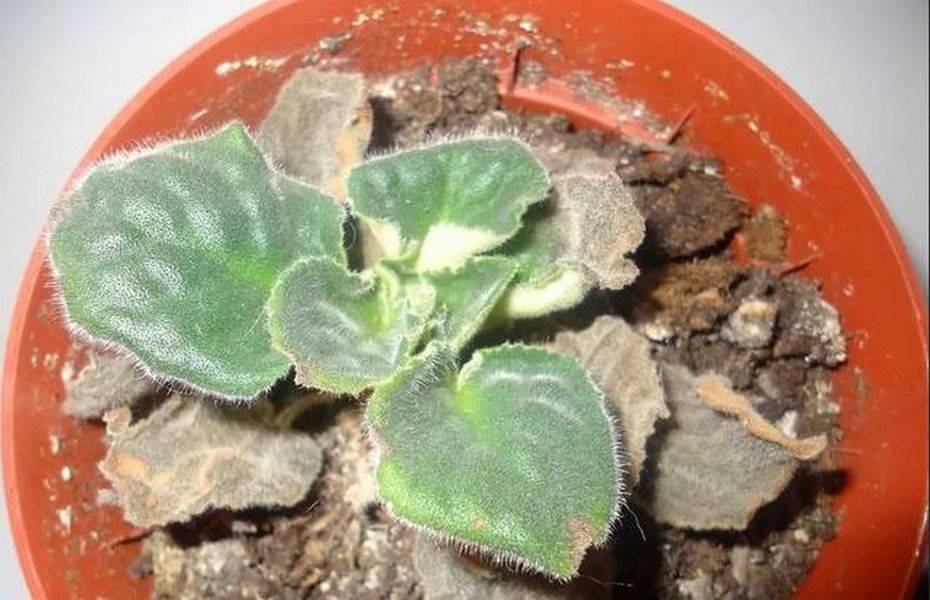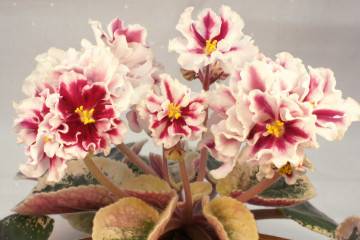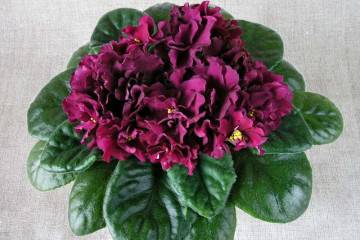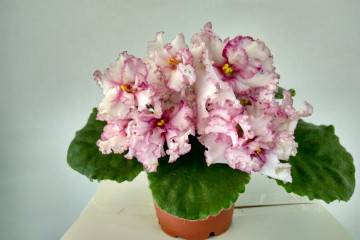Violet Blue Dragon - description and characteristics of the variety
Content:
Violet is one of the spectacular flowering plants. Breeders have bred bushes with different colors of inflorescences. A prominent representative of blue-blue Saintpaulias is the Blue Dragon violet. The following is information on growing a crop at home.
Description of the flower
A distinctive feature of the Blue Dragon in large flowers with a lush terry border. The rosette of the bush is large, reaching 40 cm. The leaves are carved, green above, reddish below.
The description indicates that the flowers grow about 7 cm in diameter. They are bright blue in color with a carved border. In a cool room, the petals take on a bright purple color. One peduncle has 4-5 buds.
Characteristic
With the onset of budding, violet leaves can curl. With the appearance of flowers, the leaf plates are straightened.
You need to place the pots with the plant at a distance from each other: the leaf plates should not be in contact.
The Blue Dragon develops slowly. The violet Blue Dragon belongs to the Gesneriev family. This is one of the attractive and original varieties that are very popular with flower growers.
History of appearance
The variety was bred by the American specialist L. Lyon. The breeder gave the name to the flower in honor of the eastern dragon, symbolizing life-giving rain, strength and wisdom. Large flowers distinguish the Blue Dragon from other varieties of Saintpaulia.
Features of Blue Dragon violet care at home
In order for the violet to develop well on the windowsill, it needs to create conditions close to those to which it is accustomed in natural conditions.
Temperature
Comfortable air temperature for the plant is 18-24 ° C. The violet thrives better in moderate coolness than in hot conditions. When kept in a room with a high air temperature, the flowers become smaller, the petioles are stretched, the leaves turn brown.
Lighting
Place flower pots on the windowsill of the west or east window. When kept on the south side, the bushes will need shelter for several hours from the scorching rays of the sun.
Watering
Use a narrow-necked watering can for watering. The water is defended for at least a day, after 24 hours it becomes warm and soft. Watering is carried out along the walls of the pot, without touching the base of the bush. Excess water after 10-15 minutes. pour out of the pallet.
Spraying
Frequent spraying of plants is not required. If the leaves are too dusty, the dust can be washed off with water from a spray bottle. You can also give the violet a shower by covering the ground with a film. Care must be taken that the sun's rays do not fall on wet leaves, otherwise they may burn themselves.
Humidity
In winter, when dry air is generated in the room due to the included heating, violet leaves can lose their decorative appearance. For moistening, a vessel filled with water is placed near the flower. The same procedure can be done on hot summer days.
Priming
The substrate for Bluedragon violets is selected loose, breathable and permeable.You can make it yourself from the following components:
- leafy land;
- peat;
- river sand;
- perlite;
- charcoal.
Top dressing
From spring to late autumn, the violet is fed twice a month. During this period, it blooms profusely, therefore it needs watering with a nutrient solution. For this, a complex mineral fertilizer is used, which is diluted with water according to the instructions.
When and how it blooms
Strong peduncles with 3-5 buds grow from the middle of the bush. 50 large double flowers can bloom at the same time. Depending on the conditions of keeping, the color of the petals varies from lilac to blue.
With the right content, the Blue Dragon violet can bloom up to 8-9 months a year. During this period, the plant must be carefully cared for: water, fertilize, pick off faded buds.
Reproduction of Saintpaulia Blue Dragon
A flower grower can breed a culture with cuttings, dividing a bush.
Cuttings
This is the most common method for breeding violets. Cut cuttings are first placed in a container with water for rooting, or immediately planted in the ground. In the first case, planting is carried out after the roots appear on the cut, in the second, they are dusted with a growth enhancer and immediately planted in a small container.
The procedure for propagating Saintpaulia by cuttings is carried out as follows:
- Cut the cuttings with a sharp instrument.
- Loose soil is poured into a small pot.
- A cutting is placed in the substrate, deepening it by 1-1.5 cm.
- The soil is tamped and watered.
- Cover with foil so that it does not touch the sheet.
The mini-greenhouse is ventilated every day to prevent the appearance of fungal diseases. After a while, young violets will appear at the base of the cutting. When the bushes grow up, they are transplanted into separate containers.
By dividing the bush
Adult Saintpaulia is increasing its daughter rosettes. A plant in this state in the pot has little room for development, so the children need to be seated. To do this, the mother bush is carefully removed from the container, the young sockets are separated, each section is planted separately.
Transplant after purchase and during reproduction
The violet is transplanted 2-3 weeks after purchase. During this period, she adapts to new conditions of detention, as well as possible diseases and pests.
The violet is transplanted into a pot slightly larger than the previous one. When multiplying by division, the mother bush is shaken out of the container, divided into parts. Each of the plants is planted in an individual pot.
Possible growing problems
An inexperienced grower may encounter some difficulties when growing Saintpaulia Blue Dragon. The plant can overcome diseases and pests due to a decrease in immunity, or it will lose its decorative effect and will not bloom due to errors in care.
Leaf problems
Sometimes the leaf plates begin to lose turgor, wither, turn yellow or turn black. There may be several reasons: lack of moisture, excessive watering, lack of nutrients, keeping the flower in a draft.
Picture 6 Yellowing of the lower leaves due to lack of nutrition or alkalization of the soil
Pests
The violet can be attacked by a cyclamen mite, whitefly, mealybug. To get rid of pests, the leaves are washed with soapy water, sprayed with an insecticide. After 10 days, the procedure is repeated.
Diseases
Saintpaulia can be affected by powdery mildew, gray mold. Due to fungal diseases, the violet can die. For prevention, it must be periodically sprayed with fungicides.
Signs of improper care
An inexperienced grower can make mistakes when growing Saintpaulia. Signs of improper care are the following:
- casting lost turgor. Happens due to lack of watering;
- long petioles are formed. Occurs due to lack of lighting;
- short petioles. Possible reasons - lack of food, dense soil;
- the leaves are down. This happens when planting Saintpaulia in a pot that is too spacious, as well as with an excess of light;
- leaves curl inward. There is such a problem when keeping a flower in hot conditions.
The blue dragon is the decoration of the violet collection. The variety is distinguished by large blue or purple double buds. With proper agricultural technology, Saintpaulia can bloom for 8-9 months.
